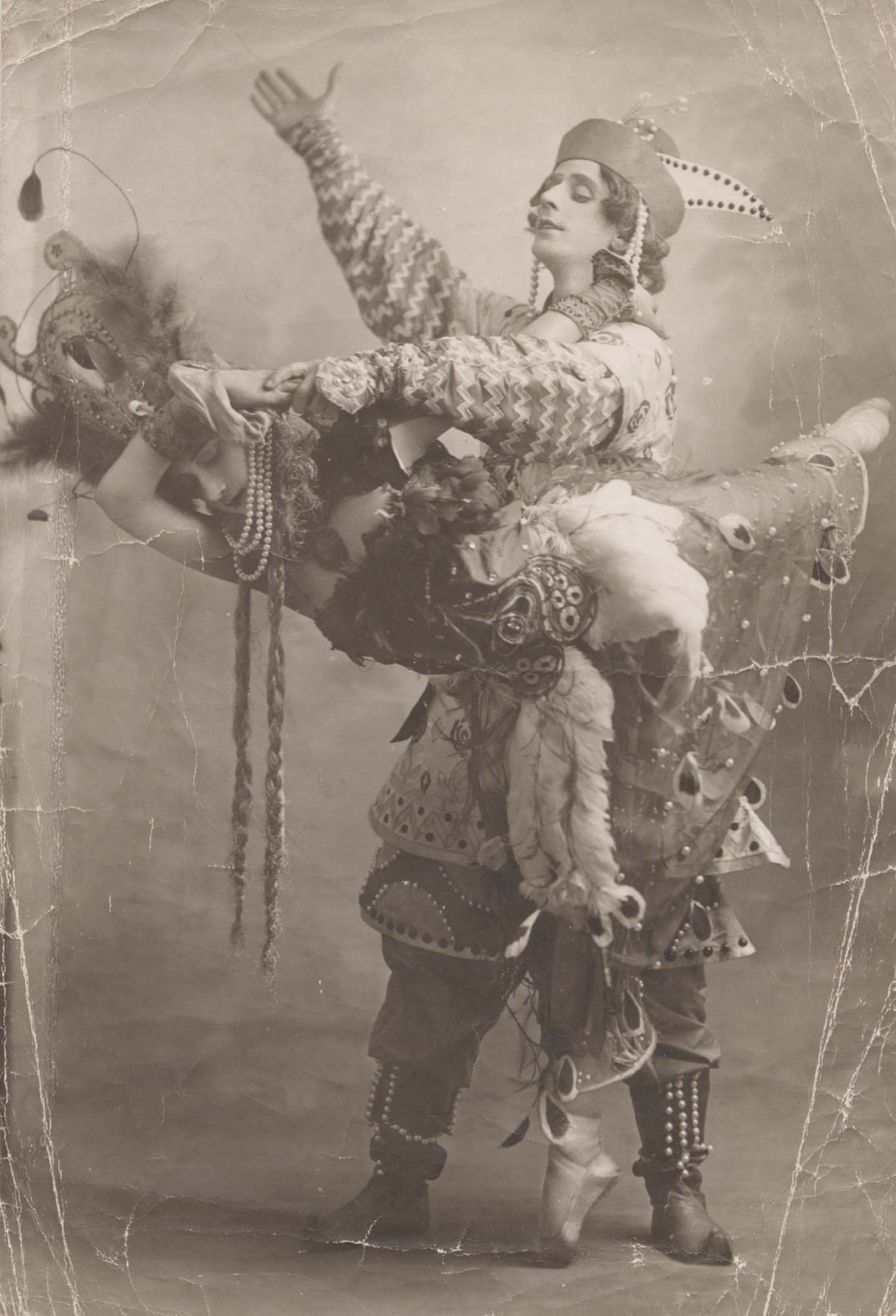people » Mikhail Fokine
Mikhail Fokine (1880-1942). Russian dancer and choreographer
Mikhail Fokine graduated from the Imperial Ballet School in St Petersburg in 1898 and joined the Imperial Russian Ballet at the Maryinsky Theatre as a soloist. He taught at the Imperial School from 1902 and his first choreography, Acis and Galatea, was for a student performance in 1905. Fokine went on to create Le Pavillon d’Armide in 1907, heralding the beginning of his collaboration with Serge Diaghilev and his circle, which included the artists Léon Bakst and Alexandre Benois. He also choreographed Chopiniana (later known as Les Sylphides), at this time, as well as his famous solo Le Cygne (The Dying Swan) for Anna Pavlova. In 1908 Fokine was invited by Diaghilev to produce ballets for his 1909 season of Russian Ballet and Opera in Paris, and he continued to work with Diaghilev until 1913, creating Cléopâtre, Le Carnaval, Le Spectre de la Rose, the Polovtsian Dances from Prince Igor, Schéhérazade, The Firebird, Petrushka, Thamar, Le Dieu bleu, Le Coq d’Or, The Legend of Joseph and Daphnis and Chloë – an unprecedented variety of styles. He danced himself and with the greatest ballerinas of the time, including Pavlova and Tamara Karsavina.
Fokine was an accomplished painter, musician and intellectual and had a huge influence on those around him. He wanted to move ballet on from being ‘pretty entertainment’, with lots of incidental dancing irrelevant to any plot, to become a potent dramatic and artistic medium in which all elements – music, dance and design – conspired to a single end. He thought about reforming ballet along these lines as early as 1904 and even submitted his ideas on the matter, along with a scenario for Daphnis and Chloë, to the powers at the Imperial Theatre in Russia. However, it was not until he joined the Ballet Russes that he was able to begin to implement his vision, which was received in Paris and London with excitement and acclaim.
Fokine was, however, notoriously difficult to work with, and he eventually fell out with Diaghilev. He returned to Russia at the beginning of World War One and choreographed several new works there. He eventually left Russia for Sweden, and settled in New York in the early 1920s. He travelled widely, putting on his ballets in many places. Towards the end of his life, Fokine worked for the Ballet Russe de Monte Carlo, where he choreographed Cendrillon and Paganini, as well as staging masterworks such as Les Sylphides, Petrushka and The Firebird. He died in New York in 1942.

